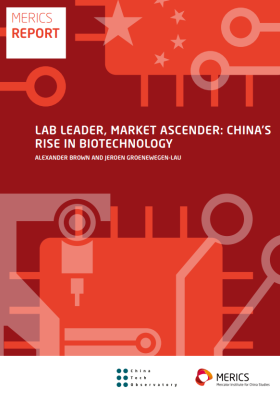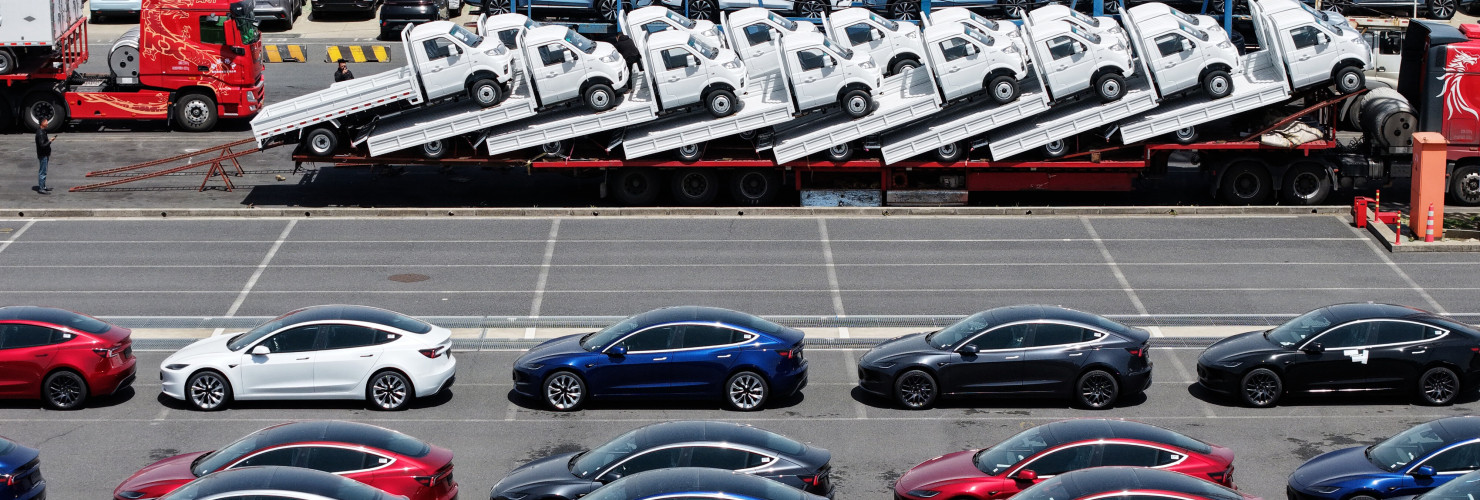

Made in China 2025 – successful enough to make an industrial-policy sequel credible
A decade after launching its industrial upgrade, Beijing has widened its goals to bolster economic security. Andreas Mischer says Xi surely believes China is on the right track.
Beijing’s “Made in China 2025” initiative to turn a low-cost manufacturing hub into a global high-tech leader cannot simply be judged by its successes and failures in areas like robotics, aerospace, advanced information technology, biopharma, and new energy vehicles. The strategy did drive industrial upgrading in many of its 10 focus sectors. But new priorities that only fully emerged after its launch in 2015 – technological self-reliance and bringing industrial supply chains within China’s borders in the interests of economic security – also broadened its scope from industrial improvement to cross-industry leadership and control.
Made in China 2025 initially aimed to avoid the “middle-income development trap”
While localizing value chains and self-sufficiency were part of the mix 10 years ago, Made in China 2025 initially aimed to avoid the “middle-income development trap” of growth stalling before China became wealthy. Assertive industrial policy was meant to make Chinese companies global leaders and generate sustained growth. But this changed with the onset of the China-U.S. trade war during Donald Trump’s first presidency. Restrictions on tech giants Huawei and ZTE and the broader tech war after 2018 saw China embrace a whole-of-nation effort for technological advancement and self-reliance – albeit with varying degrees of success.
In advanced railway transportation equipment, new energy vehicles (NEV), and green energy technologies, Chinese companies now produce highly competitive technology and rely very little on imported parts. The China Railway Rolling Stock Corporation (CRRC) held a global market share of 50 percent in 2022, domestic NEV makers held 90 percent of the Chinese market in the first half of 2024 and sourced most parts locally (although advanced chips remain a problem), while Chinese green tech companies hold 80 percent of the solar panel and 60 percent of the wind turbine market worldwide and 90 percent of major nuclear power equipment is made in China.
In five of the 10 focus sectors, success has been more moderate. When it comes to advanced IT, China leads the way in telecoms equipment with a robust supply chain, but it still cannot master extreme ultraviolet (EUV) lithography, essential for advanced chips. In ocean engineering equipment and high-tech ships, China captured 70 percent of new commercial-shipbuilding orders in 2024, but missed its target of localizing 60 percent of high-tech ship equipment supply chains by 2020. In agricultural machinery, domestic players held 95 percent of their home market in 2025, but most high-end equipment still came from abroad.
Similarly, in the new materials as well as the biopharmaceuticals and high-performance medical devices sectors, China remains reliant on foreign suppliers for cutting-edge products. In 2023, for example, Chinese companies only held 10 percent of the domestic markets for high-performance reverse osmosis membranes for water purification and semiconductor photoresist materials for making high-tech chips. The country’s healthcare sector remains dependent on imports, and China still runs a trade deficit with the EU in both biomedicine and medical devices, although this imbalance is declining.
In the last two of the ten targeted sectors, success was more limited still. Much of China’s progress in high-end computerized machines and robots has relied on foreign technology. Chinese manufacturers held only 48 percent of the domestic industrial robot market in 2024, falling short of the official target of 70 percent set for 2025. In the aerospace sector, the C919 narrow-body passenger jet by the Commercial Aircraft Corporation of China (COMAC) relies heavily on foreign suppliers. With only a small number of jets in service, COMAC is far from its goal of capturing 10 percent of the domestic market in the course of the year.
On top of that, Beijing’s prioritization of supply-side over demand-side measures has fostered overinvestment, overcapacity and inefficiency. At least 20 percent of industrial companies are in the red – a level not seen since the early 2000s – and NEV manufacturers are locked in a price war. But Beijing appears willing to accept these side-effects in its quest for long-term security. If enough Chinese companies compete in strategic high-tech areas – even at a loss – the hope is that some will eventually deliver a decisive technological breakthrough.
Self-reliance in supply and value chains has become the overarching objective
Self-reliance in supply and value chains has become the overarching objective of China’s industrial policy, which now aims to construct a comprehensive, cross-sectoral industrial base that extends far beyond the 10 sectors identified a decade ago. This push for across-the-board industrial upgrades is encapsulated in the concept of “New Productive Forces,” first outlined by Xi Jinping in 2023. China’s leadership is placing its hopes for sustained economic development – and for reigniting stagnating domestic productivity – in the emergence of new technologies that can bring benefits to large parts of the economy.
The drivers of this increasingly horizontal industrial policy include data, digitalization, and decarbonization. Beijing is in parallel supporting traditional lower-end industries to stop them from relocating to lower-wage countries. If China wants to maximize self-reliance across its supply and value chains, it would be self-defeating to allow even low-end production to move abroad. Consequently, Xi’s vision of “Chinese-style modernization” seeks to integrate emerging high-tech sectors with established industries into a holistic system. The Ministry of Industry and Information Technology (MIIT) in late 2023 published a plan to upgrade industries such as petrochemicals, iron and steel, and machine making. It also invited companies to identify model technologies that could revitalize manufacturing in five traditional industries.
No longer able rely on the advantages of low costs and globally integrated supply chains, Beijing is aiming to create a feedback loop between traditional industry and high-tech companies to boost China’s productivity and global competitiveness. For example, the MIIT in April 2025 called for the deeper integration of the industrial internet into the country’s many industrial parks. By matching industrial software developers with manufacturing companies, Beijing hopes to create a virtuous cycle in which more centralized demand drives advances in software, which boosts factory performance, creating more demand for better software.
Trump’s second-term trade policy is all but certain to convince Xi that China is on the right path. In May, something like a “Made in China 2035” plan for key technologies such as chip-making equipment was said to be in the works. But even if Xi’s chooses a less conspicuous name, any such move would strain the country’s relationship with the US and EU even further. When Beijing launched Made in China 2025 ten years ago, Washington and Brussels complained that the policy could hurt Western economies and interests. The backlash saw China drop the slogan from public discourse within a few years – yet the project continued.
This comment piece is an abbreviated version of an article published by our partner publication "The Diplomat" on August 1, 2025.
